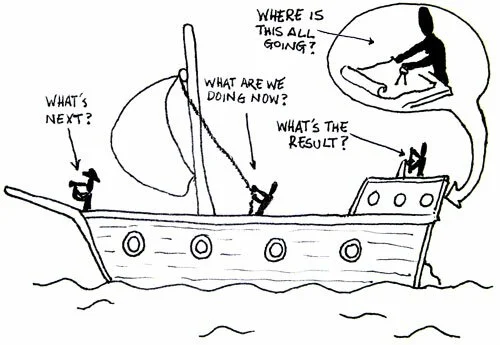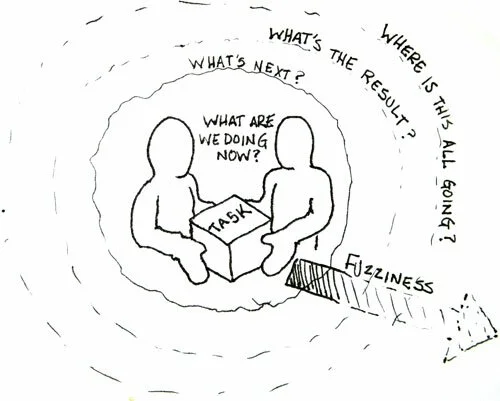Fuzzy goals
I’m home again on what is now our 12th or 13th
snow day this year. At this rate, we
will be making up snow days well into the end of June. I’m ok with it as I have
plenty to keep me busy, including preparing for some upcoming presentations on
the creativity curriculum I am documenting through this blog.
I stumbled upon a great book in my monthly Amazon book browsing
(aka binge purchasing) called “Gamestorming: A playbook for Innovators,Rulebreakers, and Changemakers” by Dave Grey Sunni Brown and James
Mancanufo. It is a book written for
business people looking to create change and inspire innovation in their
organizations. In the introduction, the authors write about something called
“fuzzy goals” that I would like to share and offer the suggestion to think
about how it relates to education and in particular in teaching creative and
critical thinking.
“Like Columbus, in order to move forward toward an uncertain
future, you need to set a course. But how do you set a course when the
destination is unknown? This is where it becomes necessary to imagine a world;
a future world that is different from our own. Somehow we need to imagine a
world that we can’t really fully conceive yet-a world that we can only see dimly
through a fog.
In knowledge work we
need our goals to be fuzzy. “ p. 5
I think what is happening with this creativity curriculum that
is different from what a traditional art teacher might teach, is that the goals
are not as precise, the way I ask my students to approach the challenges cannot
be designed fully in advance, nor can they be fully predicted.
In education, we have this expectation of a “secure chain of
cause and effect”, We use SMART goals. We lay out very detailed plans of how learning objectives will be achieved and map every detail out to the nth degree. However, real true creative growth and innovation happens when a chain is not
followed, but rather there is a framework for exploration, experimentation, and
trial and error. The same is true for
retention of information. When I think about the bits of knowledge that have
been exposed to over the course of my own school experience, those opportunities
to connect the learning in a meaningful way through exploration,
experimentation, and trial and error are the only ones that really stuck.
Our purpose of education is not for kids to memorize and
cram in information only to forget later after the project is complete or a
test has been taken. We should provide spaces for them to create their own path
and make connections that will last. (This thought came to me after
participating in a conversation with some other teachers about how happy we
should be about our standardized testing coming in the spring next year, rather
than the fall, so that they information will be fresh and thus kids will score
better. And I wondered to myself, “Why
are we even bothering to teach at all if we know and expect our kids to forget
the information later?”)
In the real world and
in life, the path to the goal is not clear, and the goal may in fact change.
In business, this is sometimes referred to as “sideways
management”.
A fuzzy goal is one that motivates the general direction of
the work, without blinding the creator(s) to opportunities along the journey.
So, how does this happen?
According to Gamestorming:
“What’s the optimum level of fuzziness? To define a fuzzy
goal you need a certain amount of ESP: fuzzy goals are Emotional, Sensory, and
Progressive.
Emotional: Fuzzy goals must be aligned with (students)
passions and energy for their project. It’s this passion and energy that gives
creative projects their momentum; therefore, fuzzy goals must have a compelling
emotional component.
Sensory: The more tangible you can make a goal, the
easier it is to share with others. Sketches and crude physical models help to
bring form to ideas that might otherwise be too vague to grasp. You may be able
to visualize an effect of the goal, such as (the viewers experience).
Progressive: Fuzzy goals are not static; they change over
time. This is because, when you begin to move toward a fuzzy goal, you don’t know
what you don’t know. The process of moving toward the goal is also a learning
process, sometimes called successive approximation. As the (student) learns,
the goals may change, so it’s important to stop every once in awhile and look
around. Fuzzy goals may be adjusted and sometimes completely changed based on
what you learn as you go.
(Students) need to navigate ambigious, uncertain, and often
complex information spaces. What is unknown usually far outweighs what is
known. In many ways it’s a journey in the fog, where case studies haven’t been
written yet, and there are no examples of where it’s been done successfully
before. Voyages of discovery involve greater risks and more failures along the
way than other endeavors. But the rewards are worth it.” p.8


